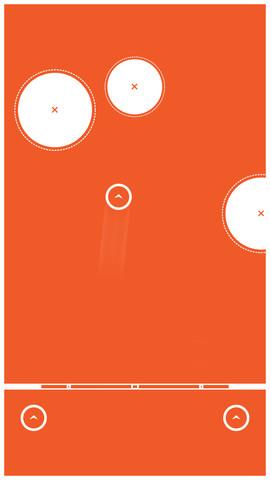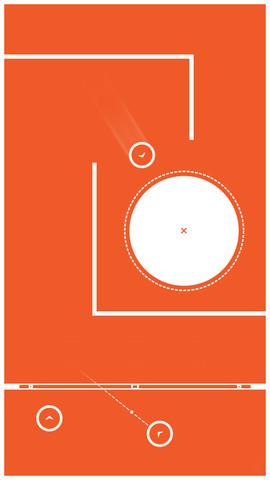- Wondering how to get Monopoly GO! free rolls? Well, you’ve come to the right place. In this guide, we provide you with a bunch of tips and tricks to get some free rolls for the hit new mobile game. We’ll …
Best Roblox Horror Games to Play Right Now – Updated Weekly
By Adele Wilson
Our Best Roblox Horror Games guide features the scariest and most creative experiences to play right now on the platform!The BEST Roblox Games of The Week – Games You Need To Play!
By Sho Roberts
Our feature shares our pick for the Best Roblox Games of the week! With our feature, we guarantee you'll find something new to play!Type Soul Clan Rarity Guide – All Legendary And Common Clans Listed!
By Nathan Ball
Wondering what your odds of rolling a particular Clan are? Wonder no more, with my handy Type Soul Clan Rarity guide.
PUK Review
Sometimes it’s the simple pleasures that are best, like popping bubble wrap. PUK is one such game, with a simple repetitive action that turns out to be far more fun and satisfying than it has any right to be.

Simplicity at it’s finest.
Sometimes it’s the simple pleasures that are best, like popping bubble wrap. PUK is one such game, with a simple repetitive action that turns out to be far more fun and satisfying than it has any right to be.
When first starting PUK, the game greets you with a circle and a blinking arrow pointing down. Pull the circle along the arrow, then let go to launch it and start the game. The title screen essentially becomes a tutorial, giving you the basics of pulling pucks back to fling them across the screen before adding a target to hit or the pressure of a timer. It’s nice to have that initial reprieve, because things ramp up rather quickly.
The goal is deceptively simple: launch your pucks from the bottom of the screen to hit giant white circle targets up above. Things start with one or two targets to hit on an empty play field, but before long, little layers of complexity start to unfold.
Some targets only need to be hit by a single puck to vanish, while others could take up to four. It is a little inconsistent though, since the size of the target does not always indicate how many hits it will take. You will always have just enough pucks at your disposal to complete the level though, which also acts as hint for those times when six pucks may appear with only three targets.
Barriers also enter the playfield before too long, filling the level with walls that can either be clever ricochet opportunities or inconvenient blockades for you to bounce around. The most devious of the barriers will create small openings for you to aim through, forcing you to carefully aim your pucks rather than simply fling and forget wildly.
You will need to get your bearings pretty quickly too, thanks to timed rapid-fire levels. Twelve seconds is all you have, which may seem like an eternity early on. But with barriers, an ill-aimed puck will often bounce back to the starting area, giving you another opportunity if you can spare the time.
The timer is actually incredibly clever in its design. It is built into the level, acting as the dividing line between the starting area for your pucks and the targets above. It also forgoes numbers in favor of a bar that progressively fills from the sides toward the center. It gives the timer an almost claustrophobic feeling as it nears the end, while also allowing you to have the timer front and center without needing to take your eyes off the action and glance at a corner of the screen to check the time.


The timer’s placement as a dividing line takes on a whole new meaning when time runs out, turning it into an impassible wall. If there are any pucks left in the starting area, then they cannot be used and the game ends. But if any pucks managed to miss their target and stay above the timer, you still have another chance to succeed. Three chances to succeed, really, as you can shake the device up to three times to give remaining pucks a nudge. The pucks will continue on the same trajectory they were already on, marked by a tiny arrow on each puck, so you are still at the mercy of your original shot, but if a puck only needed to bounce off one more wall or it had almost reached a target, then a last-minute shake becomes a life-saver.
While simply clearing levels within the time limit can be quite the challenge, PUK also rewards you for clearing them quickly. There is a notch in the timer as it closes in toward the center indicating a sort of par time that will award a medal. The medals are an interesting prize, since they all add to a cumulative medal total regardless of whether they were earned on the first, thirtieth, or hundredth level. The medals don’t hold any real value, aside from unlocking Game Center achievements after accumulating enough of them, but that doesn’t seem to diminish from the sense of accomplishment every time you earn one.
When everything comes together, PUK can suck you into an almost zen-like trance. There is just enough of a pause between levels to take a breath before you return to the frantic flinging, so that even as the challenge ramps up it never feels overly stressful. That’s good, because with a level count that supposedly reaches up to 1000, those reprieves turn a trial of endurance into more of a rhythm.
PUK also cleverly uses its minimalist art style to allow the white outlines of pucks and barriers to stand out against the stark orange background. The game’s focus, and your focus while playing as a result, is solely on flinging pucks and hitting targets, without unnecessary distractions or clutter in the visuals.
Tap and fling gameplay is nothing new on mobile devices, sitting at the root of a little game by the name of Angry Birds. But PUK manages to distill that style of play to its most essential bits, while bringing in a deviously clever timer to keep the action moving. The result is a game that could quickly become a new mobile obsession.

The good

The bad
More articles...
Monopoly GO! Free Rolls – Links For Free Dice
By Glen Fox
Wondering how to get Monopoly GO! free rolls? Well, you’ve come to the right place. In this guide, we provide you with a bunch of tips and tricks to get some free rolls for the hit new mobile game. We’ll …Best Roblox Horror Games to Play Right Now – Updated Weekly
By Adele Wilson
Our Best Roblox Horror Games guide features the scariest and most creative experiences to play right now on the platform!The BEST Roblox Games of The Week – Games You Need To Play!
By Sho Roberts
Our feature shares our pick for the Best Roblox Games of the week! With our feature, we guarantee you'll find something new to play!Type Soul Clan Rarity Guide – All Legendary And Common Clans Listed!
By Nathan Ball
Wondering what your odds of rolling a particular Clan are? Wonder no more, with my handy Type Soul Clan Rarity guide.







